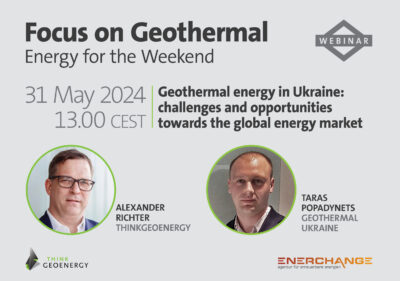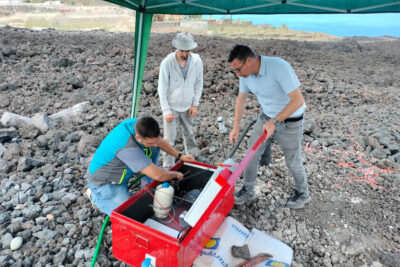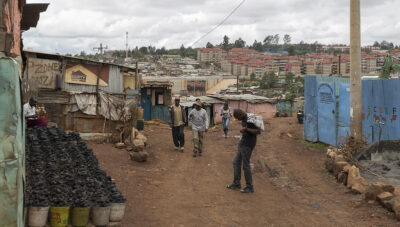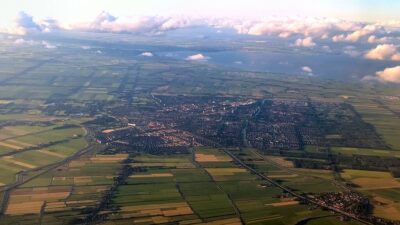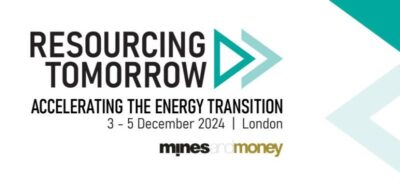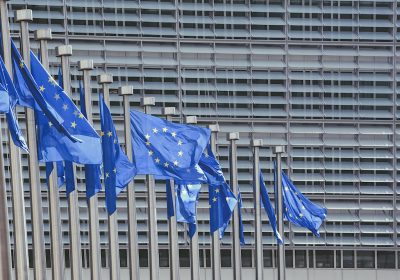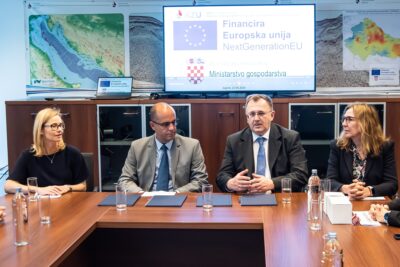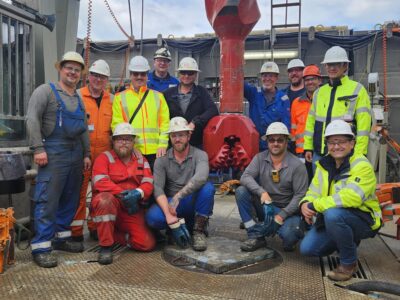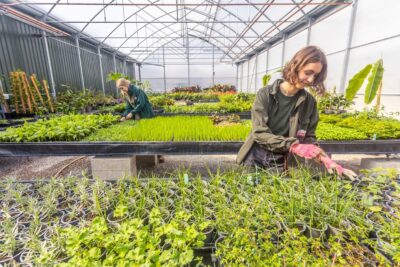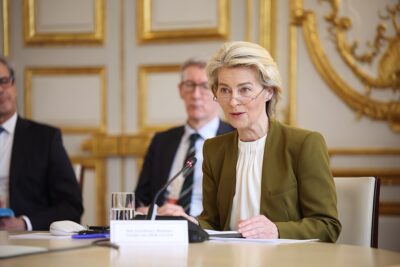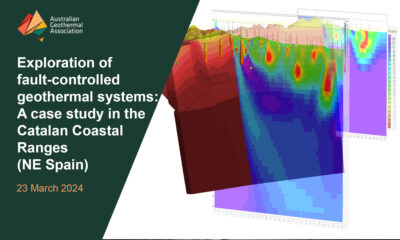Interview – Repurposing oil and gas assets for geothermal with CeraPhi Energy
In this interview, CeraPhi Energy's Andy Wood discusses the company's closed-loop geothermal technology and the ongoing demonstrator project in the UK.
CeraPhi Energy is a UK-based global geothermal technology company that specialized in the repurposing of end-of-life oil and gas wells for geothermal energy production. The CeraPhiWell™ technology – a single-well, closed-loop system – is a central piece of this strategy.
The company recently announced the start of the testing phase at the demonstrator project in North Yorkshire, UK. This “boots on the ground” moment is a major milestone for CeraPhi Energy.
To learn more about the significance of the demonstrator project and what it means for CeraPhi’s long-term plans, we spoke with Subsurface Manager Andy Wood. Aside from a discussion about the company’s strategy and technology, Andy shares his thoughts on the brand of collaboration and enthusiasm that is unique to the geothermal industry.
From my understanding, CeraPhi Energy is focusing on repurposing of oil and gas wells for geothermal energy production. What is the motivation behind this strategy and what can you say about your positioning in the UK geothermal market in contrast to other developers?
The main motivations are, I suppose, efficiency, cost effectiveness, and speed. As you know, the most expensive and time-consuming element of geothermal projects is drilling wells. Repurposing existing wells, whether they are failed geothermal open loop wells, or oil and gas wells saves a great deal of time and money, of course because you are not drilling those wells. The downside is that repurposing will generally not provide the quantities of heat that bespoke wells will supply, but their economics are attractive.
What CeraPhi Energy offers are single-well closed-loop solutions. We term that the CeraPhiWell™. Oil and gas companies understand that by utilizing our technology, we will be able to produce green energy and defer their abandonment costs.
So, what sets us apart from other UK geothermal developers is firstly, our oil and gas background. The intimate knowledge of wells really sets us apart from many others. It is this knowledge which helps us solve many of the problems associated with geothermal systems.
Secondly, it is the scalability of our products. We are not looking at producing 100 MW of energy every time. Our delivery will range from modest repurposing projects, harnessing perhaps just 1 MW of heat for industry or agricultural district heating to multi-well projects generating combined heat and power of multiple megawatts.
CeraPhi Energy recently announced the start of the testing phase of the CeraPhiTRU™ unit in North Yorkshire. Can you tell us more about the CeraPhiTRU™ technology, how it relates to CeraPhiWell™, and what data you will be collecting during this test?
Our technology is based on a coaxial single-well closed-loop system. Because we have control over the entire system, there is far less risk than in many other geothermal technologies. We can change the designs and materials which make up our completions, as well as the working fluid and the rates of fluids circulated.
Our demonstrator in North Yorkshire will work as a proof of commerciality for the CeraPhiWell™. It is a pivotal moment in the evolution of our company. Even though there are companies and organizations who understand the concept of what we do, many are waiting for a working version to be 100% certain of the CeraPhiWell™.
We will be looking at temperatures and flow rates around the system, which will allow us to calibrate our modeling package, which is called CeraPhiPro™. We will be recording these data over a period of months. We will also have a record of the temperature decline over time related to the varying flow rates that we will be utilizing. Again, this will inform our modeling package.
From these data, we will be able to calculate average thermal subsurface conductivities and compare them to model conductivities. That is going to help us a lot – looking at the real world and seeing where the model works and where it needs adjusting. The empirical data will be invaluable to us for more accurate modeling.
The CeraPhiTRU™ is a standalone Thermal Response Unit which controls and records the thermal response to testing. When we finish with the North Yorkshire project, the unit will be available to be to be dispatched to any existing well globally to directly measure that well’s closed-loop geothermal potential.
Do you anticipate that, for the most part, you will need to conduct some sort of intervention or workover on these abandoned wells before you can utilize them?
It depends very much on the on the condition of the well architecture. We have looked at hundreds of wells over the last few years. Some of those wells are perfect for us – the well KM8 in North Yorkshire, for example. That is a well that was actually drilled to be fracked in 2018. However, there has been a moratorium on fracking in the UK since 2019, so it was never used. So, it is a well that is just over three kilometers deep and is completely cased. All we will do there is insert our completion.
However, the majority of wells will be oil and gas producers. In which case, we are going to have to remove the oil and gas completion and put in our own completion. It is a relatively simple process, but we basically will only look at wells which we think can be worked over in a cost-effective manner.
We are not going to look at a well that’s 50 years old and has had intervention problems in the past. We are generally looking at Wells which are less than 30 years old, with a recent workover history so that we know that we can go in there and cost effectively remove the oil and gas completion and put in our own.
What is next after the testing phase in North Yorkshire? Are there other plans for more testing or will actual deployment of CeraPhiWell™ follow?
We have been extremely fortunate, having a huge amount of support, so we are looking forward to demonstrating that the support from everybody is well-placed. To this end, we have several studies and potential projects at various stages of development.
We have noticed that having the CeraPhiTRU™ unit on site has gained us a great deal of attention. We will be looking at inviting guests to the site in North Yorkshire over the coming months, so that people can see firsthand how closed-loop solutions can deliver heat for an endless number of scenarios, whether that’s agricultural, industrial, or residential heating and cooling.
To answer the question directly, we have up to four viable projects potentially beginning work over the next 12 months. We are looking forward to moving forward from demonstrator to commercial project. This demonstrator is actually going to help us do that because more people are coming forward that we’ve spoken to over the last two or three years and saying, “Okay, we can see that you’re actually doing what you say you can do. Can you now put our project into action?”
Has the deployment of CeraPhiTRU™ also revived interest from financing institutions?
There has been a very positive response. As I said, just by putting the unit on site, some of the people and organizations that we’ve been speaking to over the last three years are coming back to us. New companies are also coming forward and some of those are the finance companies.
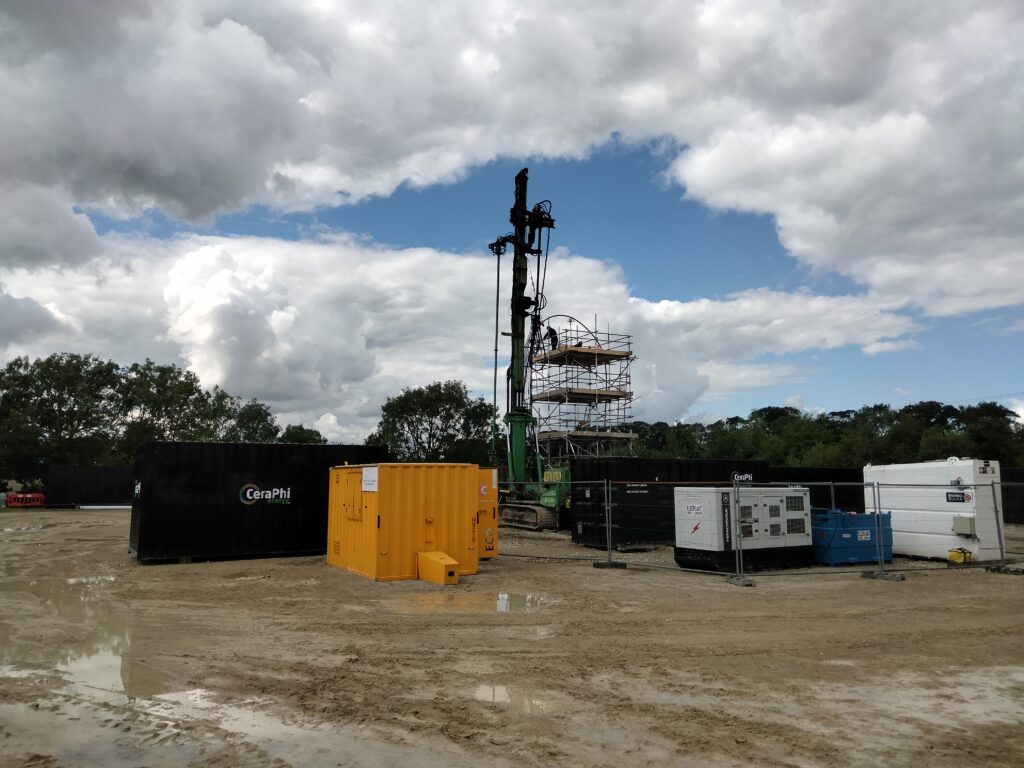
I’d like to go to the White Paper on deep geothermal in the UK that was recently published. Based on conversations with other UK-based geothermal developers, there has been this consistent theme of having difficulties in securing funding. This challenge was also cited in the white paper. Has this also been the case for CeraPhi Energy and what other challenges have you been facing as a startup?
The white paper that you mentioned is based on existing UK projects, which are open loop. And I understand they did have trouble securing funding. The Eden Project evolved into a closed-loop solution. And I understand that the United Downs Project belonging to GEL has received funding now to continue its work. But particularly the United Downs Project has taken a very, very long time.
In contrast, closed-loop geothermal technology is nascent in its development. There are, of course, always obstacles associated with being the first to do anything. But the largest barrier CeraPhi is facing is not finance – it’s awareness.
We have had to work incredibly hard to bring our technology to the fore and to create an understanding that direct, closed-loop geothermal heat is not only cost effective, but it is a green solution, it is energy-efficient, and it is a realistic piece of the energy mix. So really, I would say that that our main obstacle is the lack of awareness.
Earlier this year, CeraPhi™ announced an initiative to expand in Australia with a partnership with Greenvale. What made Australia attractive for CeraPhi™ and what new thing does the company bring to the table?
The team at Greenvale is forward thinking and, above all else, ready to use relatively new technology. They can see the potential in the CeraPhiWell™ technology and it has been great working with professionals who have that open-minded, entrepreneurial mindset.
However, I should add that CeraPhi™ did not choose Australia; Australia chose CeraPhi™. We have numerous contacts, and we are talking to many potential partners in Australia. Greenvale is one of those companies that came to us and said, “Can you do this?”
I should emphasize that we are a global company and we do not restrict ourselves to any specific geography. There are, of course, locations that are better-suited for geothermal energy, but our aim is to step outside of the box and make the world realize that the “heat beneath our feet” can be utilized just about everywhere.
For example, we opened an office, in Houston early in the company’s life. We had identified the million plus wells in around Texas as obvious targets for repurposing from hydrocarbon producers to CeraPhiWell™ geothermal production wells.
Going on from that, we have talked to companies absolutely everywhere. In just about any country you can name, we have spoken to people there over the last three years. We have also had a great deal of interaction with oil and gas companies, not just in around Houston, but globally. Everywhere you find oil, you will find that people have been speaking to CeraPhi™. We have also talked with companies looking at expanding their portfolios, perhaps in new locations that are not specifically oil and gas.
On the other side of that, we have companies approaching us who know that they use a great deal of heat and are looking to reduce the amount of money that they spend on gas or electricity to create that heat. As a result, they are coming to us, for example, European breweries or companies in the paper or sugar industries in Africa or the Caribbean. So really, it is related more to industry than geography. But I am happy to say that Australia is one of those countries that has given us some attention.
In the coming months, can we then expect news of CeraPhi expanding to new territories?
Yes, no doubt.
One thing that I have noticed is that the idea of single-well closed-loop systems tends to get lost in the conversation of closed-loop geothermal because of the Advanced Closed-Loop (ACL) technologies, like what Eavor is doing in Germany. What can you say about this?
The CeraPhiWell™ solution is very simple compared to what Eavor is doing. The Eavor solution is novel and sexy and I think that they have come up with a great design. It is also technically challenging. As someone who spent 30 years working with wells, I can see that they will come across some obstacles. Their evolving well design indicates that they are looking at those obstacles and solving the problems. I’m really excited to see their working design put into practice.
What we are doing may not be as sexy, but for every one Eavor project that produces 100 MW, there could be 100 CeraPhi™ projects, each at 1 MW. It is just a different way of skinning a cat, so to speak.
What excites you about the current state of the geothermal industry? What do you think will this industry achieve in 10 years?
To me, the energy business is absolutely fascinating. One of the things that I love about the geothermal industry is the enthusiasm and passion of its people. And that’s everybody. It is obvious when I talk to you, for example, that you are very enthusiastic about what you do. It is the same with everybody that works in geothermal energy. There is that ever-present enthusiasm, and I love that.
But what excites me about it is that even though geothermal energy has been used by man for thousands of years, I feel that the 2020s are a turning point for geothermal energy. There is a clear expansion of the industry which has started over the last few years. I think that it is going to continue. With the way that geothermal companies are planning, I can see that the expansion is going to be absolutely fascinating to watch.
I see a pivotal moment, before the end of the decade, when geothermal energy will be seen as mainstream. It is not going to be that unusual thing that happens in Iceland, but it is basically going to be something that people understand happens and can happen anywhere. And for me, being part of that geothermal renaissance is incredibly exciting.
Other professionals from oil and gas often remark that the environment of collaboration and partnership is something unique in geothermal. What can you say about this?
Yes, absolutely. Everything is guarded in oil and gas. There are some companies or countries that will openly publish what they are doing, but it is a rarity.
If we can, we do help other geothermal companies and organizations. This makes a difference. When we go to events and bump into people from those other companies, it is all smiles and I see a great deal of genuine warmth and people wishing us luck. This is why I enjoy talking to other people from geothermal – because there is this passion, and a feeling that it is really not all about competition.
I think that geothermal has the potential to solve so many of the world’s energy issues. It could be that there will be pieces of Fervo, pieces of Eavor, pieces of CeraPhi™, and that all these companies come together to come up with solutions that will solve the problems in different parts of the world. I see an openness in the geothermal business which you do not see in oil and gas, where I come from. And to me, that is another exciting part of what we are doing.







